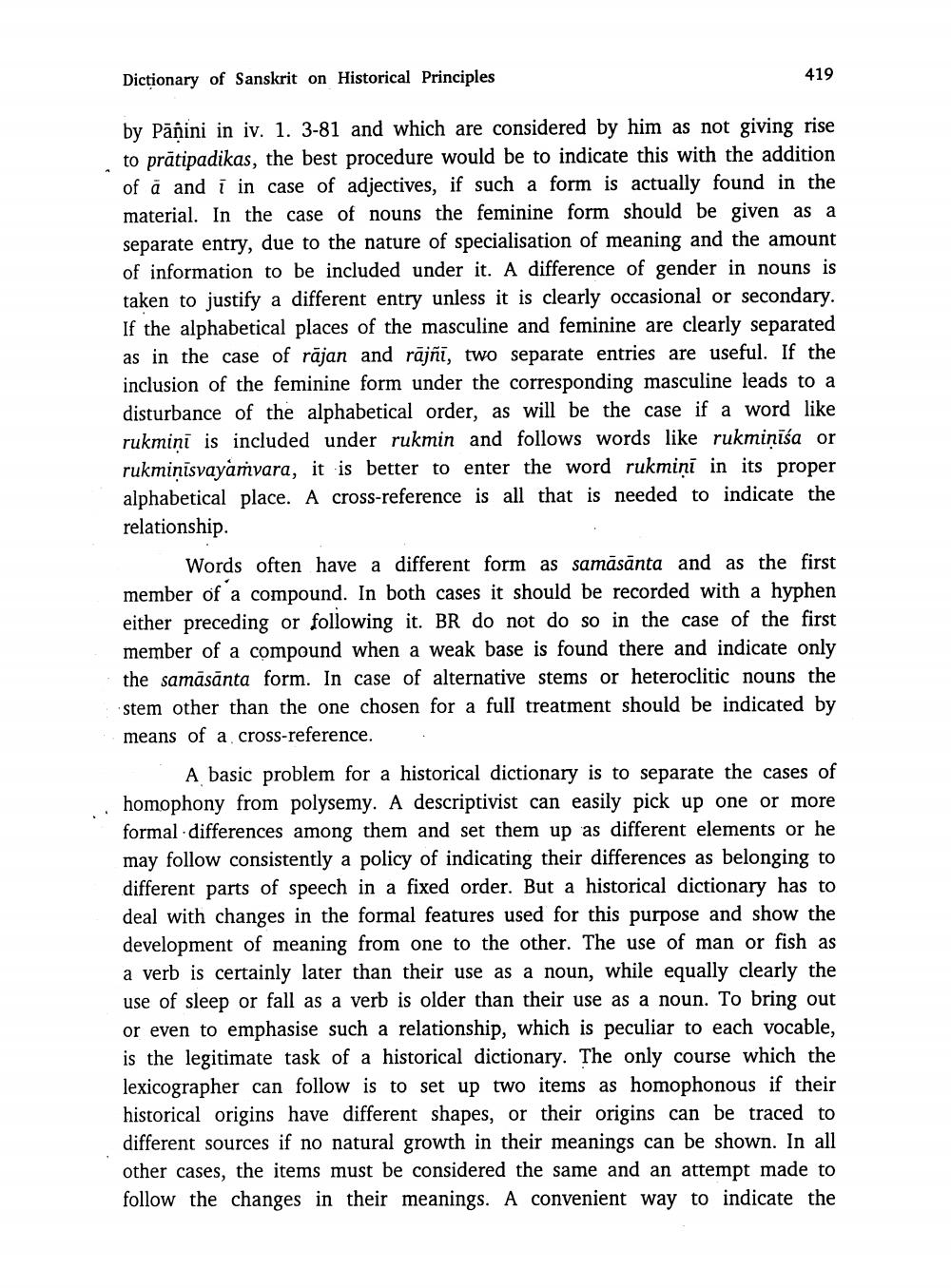________________
Dictionary of Sanskrit on Historical Principles
419
by Panini in iv. 1. 3-81 and which are considered by him as not giving rise to prātipadikas, the best procedure would be to indicate this with the addition of ä and i in case of adjectives, if such a form is actually found in the material. In the case of nouns the feminine form should be given as a separate entry, due to the nature of specialisation of meaning and the amount of information to be included under it. A difference of gender in nouns is taken to justify a different entry unless it is clearly occasional or secondary. If the alphabetical places of the masculine and feminine are clearly separated as in the case of rājan and rajñi, two separate entries are useful. If the inclusion of the feminine form under the corresponding masculine leads to a disturbance of the alphabetical order, as will be the case if a word like rukmiņi is included under rukmin and follows words like rukminiša or rukminisvayamvara, it is better to enter the word rukmini in its proper alphabetical place. A cross-reference is all that is needed to indicate the relationship.
Words often have a different form as samāsānta and as the first member of a compound. In both cases it should be recorded with a hyphen either preceding or following it. BR do not do so in the case of the first member of a compound when a weak base is found there and indicate only the samāsānta form. In case of alternative stems or heteroclitic nouns the stem other than the one chosen for a full treatment should be indicated by means of a cross-reference.
A basic problem for a historical dictionary is to separate the cases of homophony from polysemy. A descriptivist can easily pick up one or more formal differences among them and set them up as different elements or he may follow consistently a policy of indicating their differences as belonging to different parts of speech in a fixed order. But a historical dictionary has to deal with changes in the formal features used for this purpose and show the development of meaning from one to the other. The use of man or fish as a verb is certainly later than their use as a noun, while equally clearly the use of sleep or fall as a verb is older than their use as a noun. To bring out or even to emphasise such a relationship, which is peculiar to each vocable, is the legitimate task of a historical dictionary. The only course which the lexicographer can follow is to set up two items as homophonous if their historical origins have different shapes, or their origins can be traced to different sources if no natural growth in their meanings can be shown. In all other cases, the items must be considered the same and an attempt made to follow the changes in their meanings. A convenient way to indicate the




